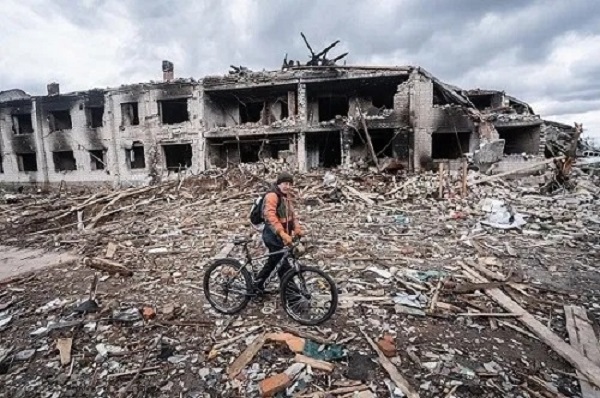New Delhi, (Asian independent) Russia’s ongoing invasion of Ukraine represents the second largest humanitarian crisis since the 1960s in terms of number of people who have fled or been displaced, and fifth in terms of fraction of the population this represents, besides it could get worse as the UN estimates that 8.3 million Ukrainians could be refugees by the end of the year, global management consulting firm McKinsey & Company report said in a report.
In the report, it mentions about 12 major sets of disruptions changing the world.
The invasion has displaced the most refugees in Europe since World War II because as of today, 5.6 million refugees have fled Ukraine, and another 7.7 million have left home and sought shelter elsewhere in the country.
“All told, the war has pushed nearly 30 per cent of Ukrainians out of their homes.”
A well-organised, rapidly scaled international humanitarian aid programme, such as the UN’s Regional Refugee Response Plan, will surely help, and in the longer term, realising the benefits of immigration hinges on how well new arrivals are integrated into the country’s labor market and society, the report said.
In the next section of the report titled “The vulnerable will suffer the most”, McKinsey & Co said the war has sent prices soaring for the essentials and what’s now at risk is the base of the Maslow hierarchy of needs — food, warmth, and shelter.
The effects are universal but will be felt most acutely by the poorest, who already struggle to cover the cost of life’s necessities, the report said.
As Europe is working urgently to increase gas supplies from countries other than Russia, by importing more liquefied natural gas (LNG) and generating more biofuel, among other moves, it would lead to demand reductions and supply increase and hence could reduce Europe’s need for Russian gas within the next year from 36 per cent of its total use to about 10 per cent.
On food security, the report said the war in Ukraine has disrupted the global food production system.
“The two countries produce roughly a third of the world’s ammonia and potassium exports, essential ingredients in fertilizer. And they are the breadbasket for much of the world, supplying about 30 per cent of global exports of wheat and barley, 65 per cent of sunflower seed oil, and 15 per cent of corn.”
Amidst the war, the race for critical materials, equipment, and commodities intensified as prices of dozens of commodities that Russia and Ukraine export rose sharply.
The war in Ukraine and subsequent sanctions are giving world leaders yet more reasons to examine their sourcing capabilities, it said in a section titled, “A new age of supply chain management has arrived”.
“Even before the invasion, resilience was at the top of supply chain leaders’ agendas. Having faced one problem after another –trade tensions, Covid-19 lockdowns, and the closure of the Suez Channel — supply chain managers had begun to shift their focus from optimising ‘just in time'” delivery to preparing for “just in case” eventualities.”
The report further mentioned changing technologies, impact on financial systems, a rise in spending on defence, cyber attack on critical infrastructure, stands taken by corporates through such as shutting shop in Russia or scaling down size.
“Of the 281 Fortune 500 companies that were present in Russia before the war, close to 70 per cent have either scaled back or exited their Russian operations since the start of the war. Almost 85 per cent of companies headquartered in Europe, the UK, or the US have left or scaled back, against only 40 per cent of those based in other regions. The exodus is not confined to any one sector.”
Lastly, it said the war has increased economic volatility and introduced considerable volatility in the risks that business leaders see to economic growth.








